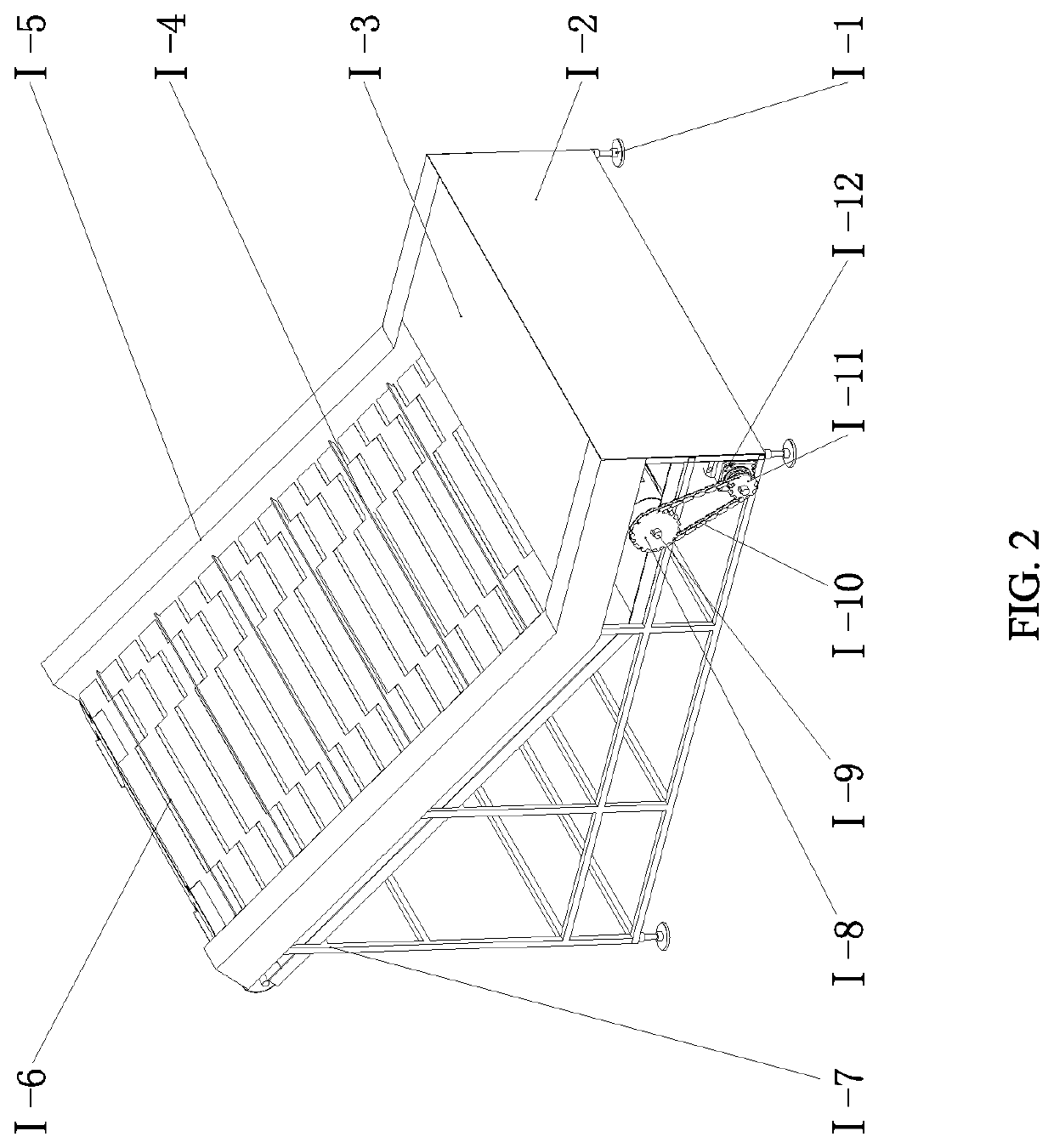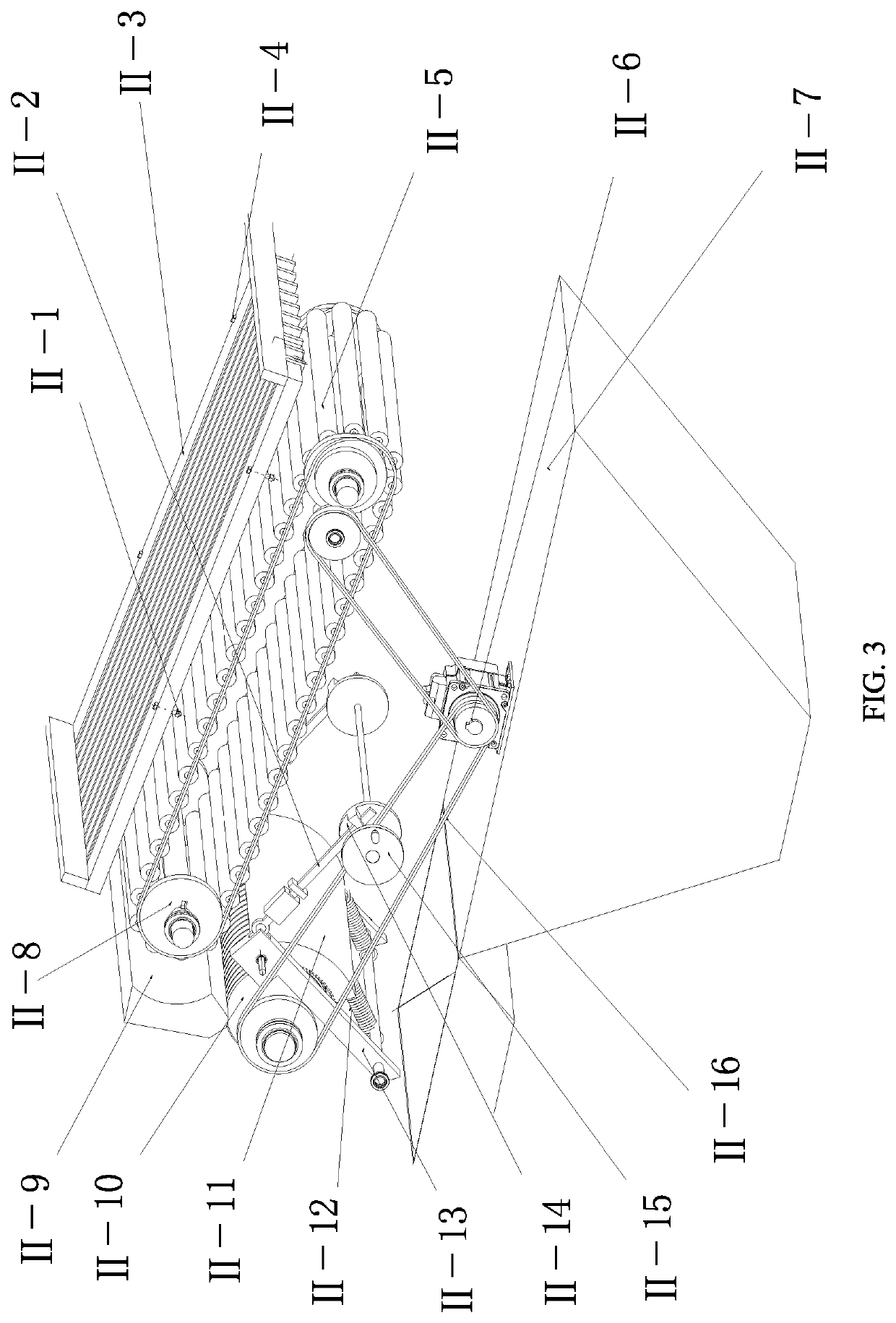With the continuous increasing of walnut production and market demand, walnut
deep processing has also become an increasingly prominent problem in scientific research and production.
Because the walnut shell is mainly composed of
lignin,
cellulose and
hemicellulose, the walnut shell is hard and thick and irregular in shape, has multiple partitions therein and gaps between shells and kernels are small, which increases great difficulty for peeling the shells and taking kernels.
Due to the lagging
processing technology, there is no mature walnut shell breaking machinery.
Furthermore, the existing shell breaking devices are difficultly suitable for households, and has the main disadvantages of huge size and high price.
The disadvantages of these shell breaking and kernel taking machines are that these machines omit peeling of walnut shells or incompletely break the shells, with low shell breaking rate, high
loss rate, low efficiency and poor adaptability to different varieties of walnuts.
For example, some shell breaking and kernel taking machines are low in walnut shell breaking rate, and high in whole walnut kernel rate; while for some shell breaking and kernel taking machines, the shell breaking rate is excessively increased, but the damage to walnut kernels is ignored, resulting in a high walnut kernel damage rate.
At the same time, the adaptability of these shell breaking and kernel taking devices to different varieties of walnuts is poor, and the shell breaking effect of the device decreases when the size of the walnut changes.
In the prior art, there are mainly physical and
chemical corrosion manners to break walnut shells and take kernels at present, among them, people are unwilling to accept the
chemical corrosion manner because it is not well controlled in practical operation, walnut kernels are easily corroded, and meanwhile pretreatment and posttreatment processes of walnuts are increased, environment
pollution can be caused if the walnuts are not well treated.
However, due to different varieties of walnuts, the sizes and shapes of walnuts and the hardnesses of the walnut shells are different, which results in a fact that the stress
stroke of the walnut shell is not changeless, so the first four methods should consider problems of positioning or size grading of walnuts when breaking the shells.
However, due to the immaturity of the method, it is difficult to ensure that the walnut kernels is not damaged to a certain degree while shattering the walnut shells.
The device has the disadvantages that the whole kernel rate is not high; the walnut needs to be positioned before
processing, which causes great damage to walnut kernel; the device has many
processing procedures, is low in shell breaking and kernel taking efficiency, and easily causes secondary damage to walnut kernels, and is high in manufacturing cost.
The device has the disadvantages that the continuous reciprocating
impact puts forward high requirements on the spring.
In addition, under the high-speed
impact, the walnut kernel is easily damaged, the whole kernel rate is greatly reduced, and the adaptability to walnuts having different sizes is poor.
The first method is that the centrifuged walnut impacts the wall at a high speed to deform the shell until it is broken, but many broken kernels are generated after breaking the shell, so this method is not ideal; the second method is that the dosage of an agent is not easy to control in actual operation, the walnut kernels are easily corroded, and environmental
pollution is also caused if well treatment is not achieved, so this method is rarely used; the third and fourth methods are expensive in device, too high in shell breaking cost and not ideal in shell breaking effect.
Yuan qiaoxia found that too large or too small spacing is not conducive to shelling through the experimental study of a roller plate type
ginkgo shelling device.
When the distance is too large, the squeezing amount can not reach the critical squeezing amount needed for breaking the shell, and the shelling rate decreases; when the distance is too small, the squeezing amount is too large, and the shell breaking rate increases.
The
machine can not automatically adapt to the size of walnuts, and because of different varieties and sizes of walnuts at present, there are some defects in the practical application.
However, the main problems of the most shell breaking machines are that shell breaking rate is low, many shell breaking machines can omit shell breaking or cannot completely break shells, and shell breaking rate is 80% or even lower,
loss rate is high and kernel taking rate is low.
Due to incomplete shell breaking, partial broken walnut kernels are brought in the broken shells to be difficultly taken, the kernel
loss rate of some shell breaking machines is up to 20%, while the high kernel taking rate is about 60%; the kernel integrity is poor, some shell breaking machines only seek to improve the shell breaking rate, so as to result in high walnut kernel breaking rate; adaptability is poor, when the variety, size, shell shape and other factors of the walnut change, the shell breaking performance of the shell breaking machines becomes worse.
If the size of walnuts is too large, too large walnut size causes walnut shells to be excessively broken so that walnut kernels are damaged, and too small walnut size lead to a fact that walnut shells cannot be broken, and therefore, there is a need to grade sizes of walnuts before shell breaking.
The shell and kernel separation is one of difficulties in breaking walnut shell and taking kernels.
There are few ideal separation methods and equipment in China.
Although the existing methods and equipment can realize shell and kernel separation, but the equipment cost is high, the process is complex, and the separation rate is low.
Because the broken ends of walnut shell and kernel have burrs, they can be adhered by plush, so the separation effect of the device is not good.
To sum up, there are many existing walnut shell breaking and kernel taking technologies, which have their own advantages, but also have serious disadvantages.
Some devices only pursue the function in one aspect to result in no ideal effects in other aspects, so they can not guarantee the adaptability of the shell breaking device to different sizes of walnuts, as well as the shell breaking rate and shell breaking efficiency.
Then, such devices can not meet the needs and development of the market.
 Login to View More
Login to View More  Login to View More
Login to View More 


